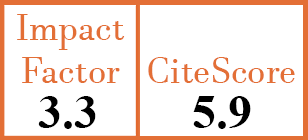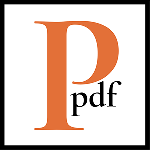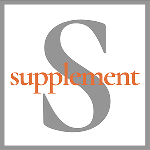Full Papers
Understanding mechanisms of JAK1 inhibition on synovial fibroblasts using combinatorial approaches of bulk and single cell RNAseq analyses
Y. Son1, D. Korenfeld2, A. Suarez-Fueyo3, M. Ruzek4, J. Wang5, B. Harvey6
- AbbVie Bioresearch Center, Worcester, MA, USA. sonyuna90@gmail.com
- AbbVie Bioresearch Center, Worcester, MA, USA.
- AbbVie Bioresearch Center, Worcester, MA, USA.
- AbbVie Bioresearch Center, Worcester, MA, USA.
- AbbVie Bioresearch Center, Worcester, MA, USA.
- AbbVie Bioresearch Center, Worcester, MA, USA.
CER17455
2024 Vol.42, N°11
PI 2194, PF 2205
Full Papers
Free to view
(click on article PDF icon to read the article)
PMID: 38910570 [PubMed]
Received: 09/01/2024
Accepted : 29/04/2024
In Press: 19/06/2024
Published: 04/11/2024
Abstract
OBJECTIVES:
The aim of these studies was to characterise the molecular effects of a tool JAK1 inhibitor on cultured primary fibroblast-like synoviocytes (FLS) from patients with rheumatoid arthritis (RA) through both total and individual cell analysis.
METHODS:
RA-FLS cultures from 6 (Bulk RNA-seq) or 4 (ScRNA-seq) donors were pre-treated with various concentrations (100 nM and 1μM) of ABT-317 with/without exposure to 25% SEB-conditioned PBMC medium to mimic the RA inflammatory milieu. Cells were subjected to both bulk RNA-seq (36 libraries) and single cell RNA-seq (scRNA-seq; 24 libraries) to identify biological processes impacted by CM and ABT-317 treatments.
RESULTS:
In our bulk RNA-seq analysis, a total of 2,605 differentially expressed genes (DEGs) were identified between CM-stimulation and unstimulated groups, while 1,122 DEGs were found between ABT-317 1μM and DMSO in CM-stimulated groups using thresholds of log2 (fold change) ≥ |0.58| and FDR ≤ 10%. Both bulk and single cell mRNA analysis of RA-FLS treated with a combination of CM and ABT-317 demonstrated the expected changes in inflammatory pathways such as interferon and IL-6 signalling. However, other non-inflammation associated pathways were also altered by ABT-317. In addition, the single cell analysis highlighted that FLS segregate into distinctive clusters upon combination CM and ABT-317 treatment, suggesting JAK inhibition can drive RA-FLS into multiple heterogenous cell populations. Interestingly, one of the unique RA-FLS clusters that emerged from the CM and ABT-317 treatment showed matrix metalloproteinase-3 (MMP3)high expression as well as several gene signatures that are not found in any other ABT-317 derived clusters.
CONCLUSIONS:
JAK inhibition with ABT-317 is effective at globally inhibiting CM-induced pro- and non-inflammatory pathways in FLS cultures, but also results in several distinct fibroblast populations with unique gene-associated pathways. This study advances the molecular understanding of JAK1 inhibitor effects on fibroblasts that may contribute to clinical efficacy.



